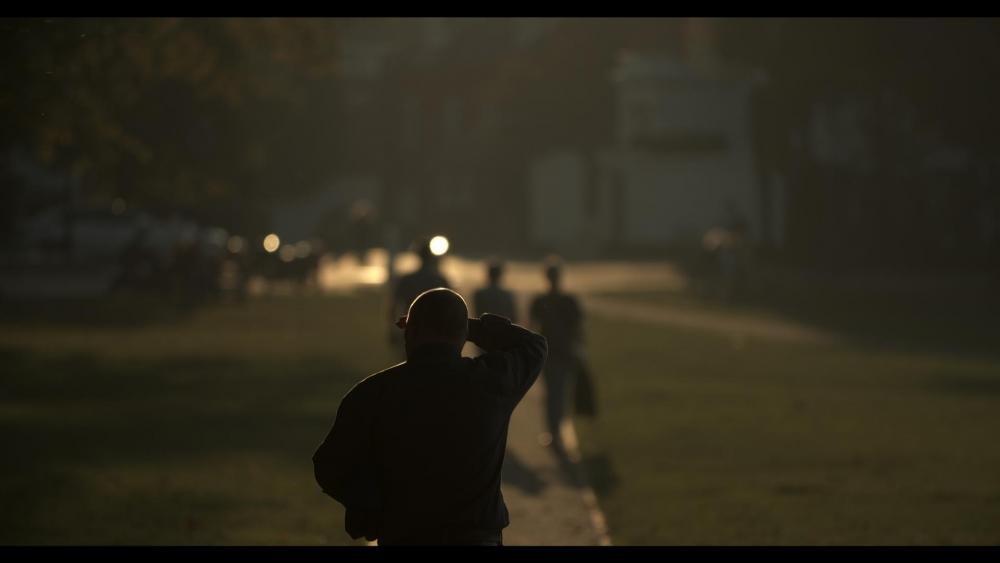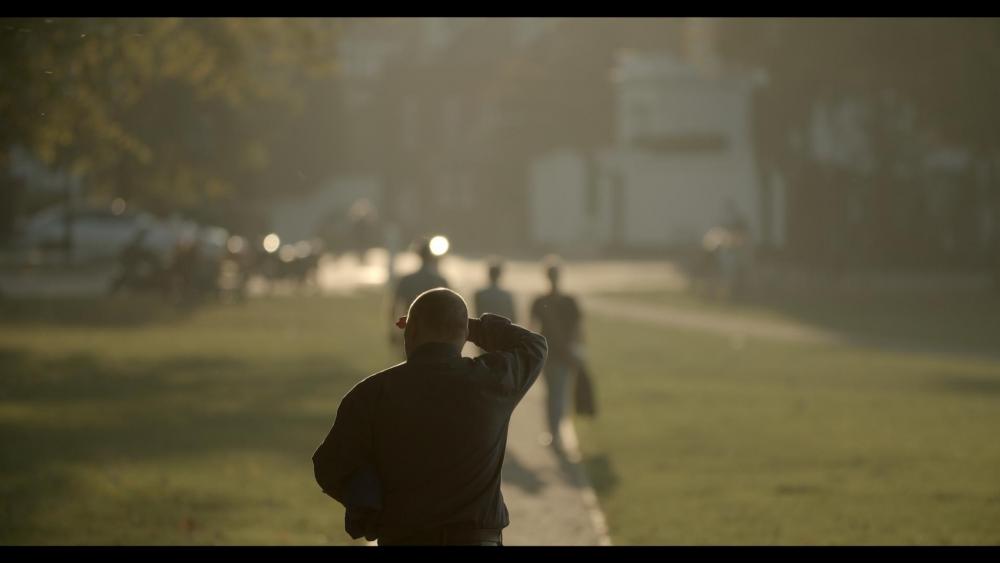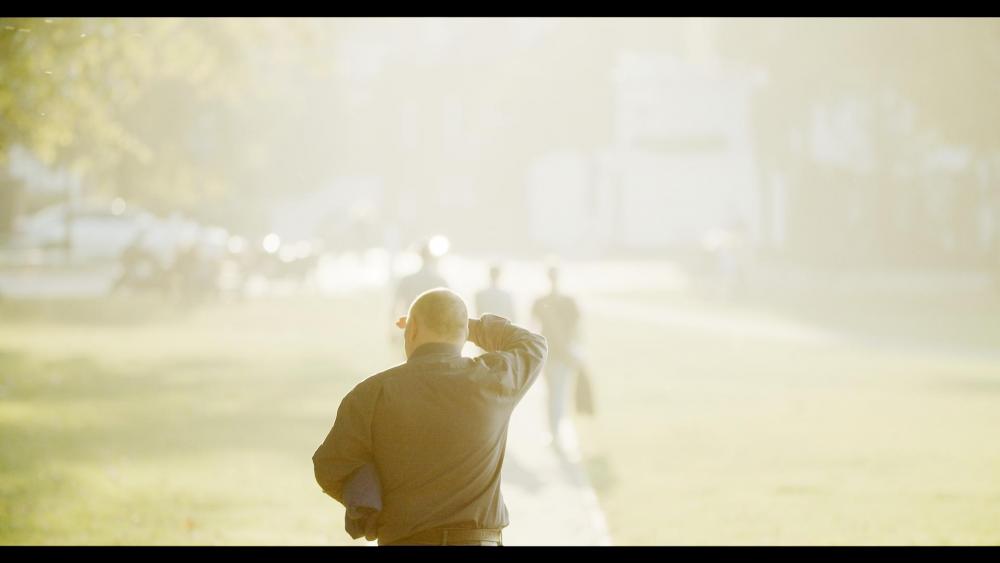-
Posts
7,995 -
Joined
-
Last visited
Content Type
Profiles
Forums
Articles
Everything posted by kye
-
Good video - I thought the soundtrack made it quite cinematic.
-
Nice! There are some interesting projector lenses around, but the lack of a standard mount or adapters means they're a little too out-there for me, at least at the moment. Plus them having no ability to stop down does limit their use in a creative sense. Still, considering that adapting FF vintage lenses seems pretty mainstream now, they're probably where the real bargains are
-
Hang out on these forums more often... People here use native lenses, speed-boosters, non-speed-booster adapters, vintage stills lenses, vintage cinema lenses, and even free-lensing of lenses! I don't remember anyone using non-camera lenses like projector or enlarger lenses, but someone probably has.. Welcome! Personally, my m43 kit has both native and vintage lenses in it. I do own a m42 to m43 0.7x focal reducer which I might use with a ~50mm to fill in the 80-100mm equivalent spot in my kit, but I might end up just using a 35-50mm lens without a focal reducer and therefore not end up using it at all. The crop factor makes it a spectacular choice for longer zooms too, for sports or for wildlife. A 135/150/200mm vintage FF lens will set you back less than dinner and a movie, and combined with a $10 dumb-adapter you get a fast, high quality and solidly built manual telephoto lens, plus because you're cropping into the lens with the sensor size you don't get all the CA and soft-focus of the corners of those lenses so they're even better than when they were new!
-
Maybe that's an incentive to not downscale.. Assuming that the compression is done in hardware maybe it's easier to just output 8K?
-
Philip Bloom released a prores file he shot and I played with it, and you could really push that file around. Am I right in thinking that was 10-bit? If so, 12-bit would be absolutely spectacular!
-
Thanks for sharing that, what a wonderful piece. Lots of great things to say about it, the thing I liked most about it is that it really had a strong and coherent style, fun and whimsical but also tender and genuine too. But perhaps the greatest compliment I can pay it is that despite it being shot on a significant camera, and being shared in the thread discussing that camera, when I watched it I stopped thinking about the camera and just enjoyed it as a creative work and all thoughts of equipment dropped away. This is the point of art, to take us to another place, right?
-
Just a small thing but the GH5 isn't dual ISO, only the GH5S has that. I wish my GH5 did have it, but sadly, no
-

Panasonic's new AG-CX350 (4k 60p in 10bit up to 400Mbps HEVC)
kye replied to Mako Sports's topic in Cameras
Yeah, after having the XC10 (with it's 24-240mm equivalent fixed lens) and my iPhone (and it's fixed lens around 24-28mm equivalent) I switched to the GH5 and bought 16mm and 35mm equivalent primes for my main lenses (as well as some longer ones). I thought about the 24-240 range and I realised I was sick of the 24-28 range. I shoot travel and home videos and so mostly my shots are about people in a location, which is 35mm territory when you factor in the practical distance I am from people, and the other main shot is really wide for those grand landscapes, or interior shots. With the ETC 1.4x crop the 35mm becomes a 50mm, so that adds a bit of reach, and the 16 becomes a 22mm but I hardly ever use that length. I'm so much happier with 16mm as my wide end. -
Ah, Linear - of course. PM away, happy to help.
-
That is a really nice shot.. even working in the landscape photographers S-curve from the waterline into it and of course, ML makes the image quality look effortless! Maybe you can process the footage in Resolve and get a LogC output.. Do they give you the Colour Space Transform OFX plugin in the free version? If so, you could pull everything into the timeline, set whatever RAW settings on each shot you wanted, then in the Colour page, go to the Timeline node editor (instead of the Clip one) and using the transform plugin convert the shots to LogC before exporting all the shots as separate files? If you output as a 12-bit codec (I don't think there are 14-bit codec options but maybe there are?) then you shouldn't lose too much colour info in the conversion. I know that LogC can be quite flat as it's designed to hold a lot of stops of DR, so higher bit depths are preferred. The only question in that workflow is what colour space to transform it from, because Canon RAW isn't a colour space in that list. You seem to be pretty locked-on to the look you're going for, so maybe just cycle through the list and see what gets you closest? I've graded ML RAW footage in Resolve and couldn't find any definitive answer on what to use, but there were a few options that looked about right. In terms of having 'skillz', if someone can get the look they're after from any NLE with only a couple of changes, those are skills indeed! Edit: just worked out CST means Colour Space Transform lol. Sounds like you're on the path already
-
Nice!! Looking forward to hearing (and seeing?) your impressions when it arrives I kind of like that feeling on eBay when you think you might end up with a bargain, but mostly I just pay too much and don't know what I'm doing! ???
-
The biggest delay is from the top to the bottom of the frame (or at least, it is in every camera I've seen - maybe others are different?) so if you're panning left-right or right-left then it won't make much difference. Think about those RS tests where people just move the camera left-right-left-right-left-right-left-right and the whole thing is wobble-vision. Technically each line is a little compressed or expanded horizontally when you move sideways, but the jello effect of the rolling shutter is mostly just vertical. If you had some magical way of eliminating the vertical effect (a plugin that lined up all your vertical lines perhaps) then maybe you'd notice a compression or expansion when panning, but I suspect it's too small to really be of much importance.
-
Now THAT is how to shoot a camera test!! Bravo!
-
When did you switch to the simpler workflow? To me, the colours look basically the same as previous shots you've posted, so if you've changed workflows during that time I didn't notice any difference so you're matching relatively well
-
This board is a little more hip-and-shoulder than other places, so strong opinions are kind of the norm here. They do spark disagreements sometimes too. However, this forum has been through a number of discussions about the merits of free-speech vs political correctness and (IMHO) the general tone of those conversations was that open and honest opinions were more valuable than keeping nice with everyone. Be that for better or worse! In terms of the style of that video, it is a very strong style of editing, one which we know the internet took up heavily and is now a cliche, and for many without much talent is a crutch and people churn out videos with impressive transitions instead of making useful content. You may also not be aware, but many of the people on here are older, who came from broadcast or ENG where the bells and whistles weren't even available. I don't know how young you are, but there is a huge range of tastes, much moreso than the 20-something "professionals" who think that The Matrix is classic cinema, and haven't watched a foreign or B&W film in their lives. Besides, @webrunner5 is just grumpy sometimes
-
I meant that it looks really good That's an expression that my dad always used to use when something exceeded his standards or expectations - like if you hired a car but swapped your Toyota for a Lexus and asked if that would be ok. I guess it doesn't translate well ?
-
In terms of what you can try to improve the clips you've already shot, here are some thoughts. Try using the stabiliser to smooth out the pan a little. The stabiliser will crop into the image, but if you're only wanting to stabilise a slightly jerky pan then it shouldn't have to crop much at all to really help. Here's a useful video: If you're really seeing compression artefacts then you can attempt to hide them by adding a small amount of blur to smooth them over and then adding a small amount of sharpening after that to match the look with your other shots. This is a pretty nasty thing to do to your footage and if you add too much of this treatment it will look like very low quality footage, but if you add a tiny tiny bit of this then it might improve things a small amount. I'd suggest using the OFX plugin called something like Soften and Sharpen which allows you to soften/sharpen small/medium/large textures individually, so you can do it all in one place and just turn it on/off to check if you're making things better or worse Nice work on plowing through a paid gig - hopefully the first of many?
-
Looks like retro film, both in the good ways with the bokeh and rendering and the bad ones with the highlight flaring. Not bad for $20! Nice work What do you think of the image? Looks just fine to me
-
The output files are certainly starting to look like film, that's for sure!
-
I asked the pro colourists if I should ETTR with the 10-bit footage on the GH5 and they said it wasn't necessary and it would be better to expose as normal. I thought that people used ETTR to get better signal:noise in 8-bit, so anything 10-bit or more should be fine. Although, the exposure video from Filmmaker IQ wasn't talking about ETTR as much as adjusting where the DR was around your middle-grey. It would be interesting for someone to do some tests with setting skin-tone by exposure levels at the various ISOs and seeing how the different shots grade in Resolve.
-
*cough* proxies *cough* An 8K reference monitor will be crushingly expensive, just like every other genuine reference monitor out there. Here's a thread where professional colourists discuss reference monitors that might prove interesting to everyone here.... https://lowepost.com/forums/topic/467-budget-grading-monitors/ We are all playing in the very shallow end when it comes to grading (and our wallets are very grateful..) 8K is a resolution to shoot in, to do VFX in, and to export in. It's not a resolution to edit in, or grade in.
-
Photography is completely different to video.. If I still did stills (ha ha) then I'd be shooting my 700D and loving it, but for video, well, it was so disappointing that it inspired me to go 4K.
-
Canon cameras have a lot of things going for them in both the image and non-image departments - from things like colour science and DPAF, to reliability, and to ergonomics and lens selection. Sometimes the internet can overlook non-image considerations like reliability and ergonomics and be caught up in a frenzy of just wanting pure specs like stupidly high resolution, enormous bitrates, and radical over-sharpening. This forum tries not to get caught up in specs-only discussions (although we do sometimes), and we have a healthy respect for the softer cinema-like rendering of film, the lower resolutions from ARRI and pre-4K cinema cameras, but mostly we draw the line at the barely-720p fuzziness that Canon passes off as it's 1080p files. Partly it's because the image from Canon is so lacking in comparison to other offerings at similar price points (or even getting used equipment at half or a third their price points), and partly because through Magic Lantern we've seen what the hardware is capable of producing, and yet Canon continues to protect it's cinema line-up by not wringing the best out of its existing hardware architectures. A lot of people on here started shooting video on Canon DSLRs and have migrated through frustration to the other brands because the image quality just didn't meet minimum standards. In terms of being nice, you won't find people here being nice all the time... however you will find that most people here are forthright with their opinions but are mostly sincere and want to help. Welcome!
-
AF on the GH5 has always had problems, but testing AF reliably is almost impossible too, as you can never perfectly replicate the same subject framing, movement, lighting, noise patters, etc. If you had water damage in the camera then I think it would be really obvious, with it trying to focus all over the place or not doing anything at all. I'd get out and shoot stuff and see how you go





